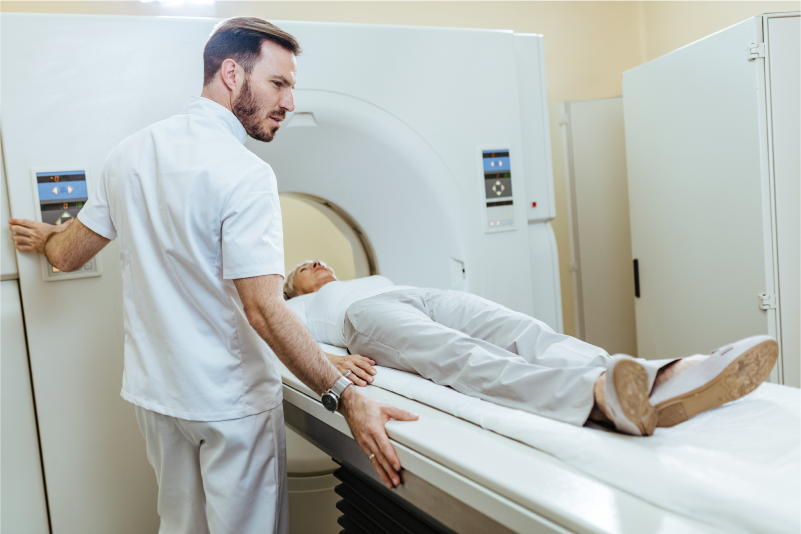- What is a PET-CT scan
- How long does a PET scan take?
- What you can expect
- What are the risks and side effects of a PET scan?
PET-CT
- A positron emission tomography (PET) scan is an imaging test that can help reveal the metabolic or biochemical function of your tissues and organs.
- The PET scan uses a radioactive drug called a tracer to show both typical and atypical metabolic activity.
- Reconstructions can be done to view body structures in different planes. (top to bottom, front to back, side to side)
- A PET scan can often detect the atypical metabolism of the tracer in diseases before the disease shows up on other imaging tests, such as computerized tomography (CT) and magnetic resonance imaging (MRI).
- The tracer will then collect into areas of your body that have higher levels of metabolic or biochemical activity. This often pinpoints the location of the disease.
- The PET images are typically combined with CT or MRI and are called PET-CT or PET-MRI scans. Healthcare providers frequently use PET scans to help diagnose cancer and assess cancer treatment.
How long does a PET scan take?
- The entire PET scan process takes about two hours. Please add an additional 30 minutes, prior to the injection for counselling and informed consent.
- It can take up to 60 minutes for your body to absorb the injected radiotracer. During this time, you’ll need to sit quietly and limit your movements.
- The actual PET scan takes about 30 minutes.
- After the test, you’ll need to wait while the technologist reviews the scans to ensure the images are clear.
What you can expect
- You’ll receive an IV injection of a radiotracer that contains a safe amount of a radioactive drug. The most commonly used radiotracer is fluorodeoxyglucose (FDG).
- You will sit in a chair for about an hour while the radiotracer moves through your bloodstream and gets absorbed by your organs and tissues. Too much movement or activity at this time can send the radiotracer to areas of your body that your healthcare provider isn’t testing.
- You won’t be able to feel the radiotracer.
- If you are receiving a PET/CT scan, you may also get an IV injection of a contrast dye which highlights vascular structures
- You will lie on an exam table that slides in and out of the PET/CT scanner. The scanner is shaped like a giant doughnut, similar to an MRI.
- During the scan, which usually takes about 30 minutes, you must remain still as movement may blur the images. A technologist will review the scans before you leave to ensure the images are adequate.
What are the risks and side effects of a PET scan?
- In general, PET scans are safe and rarely cause problems. The amount of radiation in the radioactive tracer is very low and does not stay in your body for long. You should drink lots of water after a PET scan to help flush the radioactive drug from your body.
- PET scans generally only pose risks in the following situations:
- People who are pregnant and/or breastfeeding should not get PET scans. The radiation may be harmful to a foetus and can pass to an infant in breast milk.
- Some people may have an allergic reaction to a PET scan radioactive tracer or CT scan contrast dyes. These allergic reactions are extremely rare and usually mild. Your medical team will give you medication to quickly slow and stop this response if it happens.
- People with diabetes may not absorb the sugar in the radiotracer, which can affect scan results. Your healthcare provider will offer suggestions to modify your diet and medications before the test.



